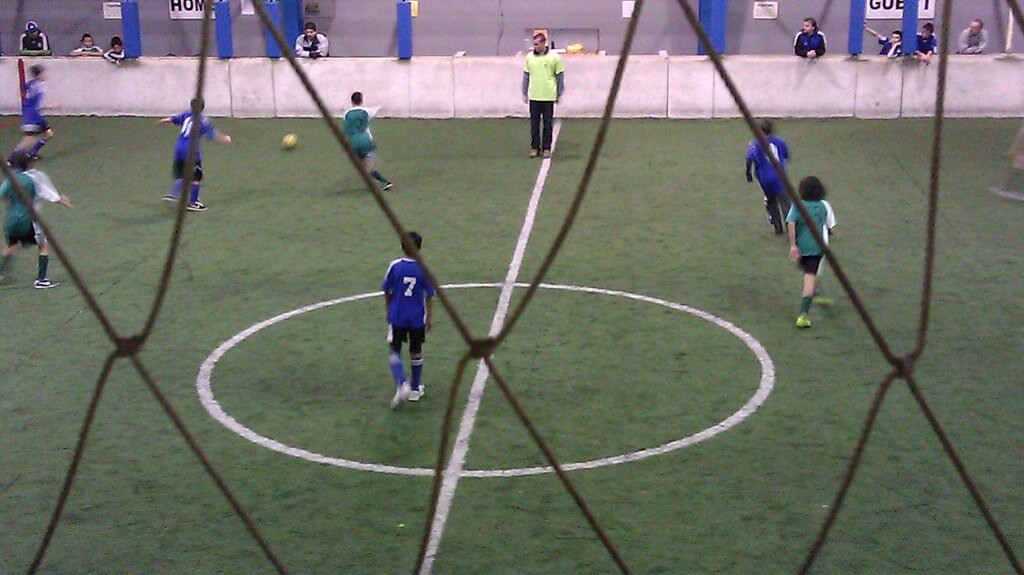Soccer, often referred to as “the beautiful game,” captivates millions of players and fans around the world. While outdoor soccer is the most commonly known form of sport, indoor soccer has gained significant popularity in recent years. You might be wondering: what sets these two versions apart?
In this comprehensive article, we will delve into the differences between indoor soccer and its traditional outdoor counterpart. From the playing environment to the style of play, we will explore the unique elements that make each variant distinct.
Whether you’re a player looking to expand your skills or a fan seeking a deeper understanding, join us as we navigate the diverse worlds of indoor and outdoor soccer. Get ready to discover the contrasting dynamics and discover which version of the game resonates with you.
What is the Difference Between Indoor and Outdoor Soccer?
The difference between indoor and outdoor soccer is that Indoor soccer is played in enclosed arenas with smaller teams on a smaller field, emphasizing quick passes and close ball control, and Outdoor soccer takes place on larger fields with more players, promoting long passes and strategic positioning.
The playing environment, team size, and style of play distinguish these two versions of the game.
Let’s explore these distinctions further:
Playing Environment:
The most obvious dissimilarity lies in the playing environment.
Outdoor soccer is played on expansive fields, often with natural grass or artificial turf. The large dimensions of the outdoor field allow for more running space and strategic manoeuvring.
In contrast, indoor soccer takes place in enclosed arenas or gymnasiums with smaller playing areas. These indoor venues feature hard court surfaces or specialized turf.
The compact nature of the indoor field creates a faster-paced and more intense game.
==>> You can also read the difference between Futsal and Indoor soccer here.
Team Size and Rules:
The team size also varies between indoor and outdoor soccer.
Outdoor soccer typically involves 11 players on each team, including a goalkeeper. This larger team size promotes a diverse range of positions and strategies.

Indoor soccer, on the other hand, is played with smaller teams. Typically, it consists of 5 to 7 players on each side, including the goalkeeper.

The reduced number of players leads to more individual involvement and a faster game tempo.
==>> Read more about indoor soccer rules here.
Playing Style:
The playing style differs between the two versions due to the variations in field size and team numbers. Outdoor soccer focuses on long passes, utilizing the vast space to create scoring opportunities. The game emphasizes endurance, as players cover extensive distances throughout the match.
In contrast, indoor soccer revolves around quick passes, close ball control, and rapid decision-making. The limited space requires players to think and react swiftly, promoting technical skills and improvisation.
Physical Contact and Offside Rule:
Outdoor soccer allows for more physical contact between players. Shoulder-to-shoulder challenges and aerial duels are common occurrences. Additionally, outdoor soccer strictly enforces the offside rule, which prohibits players from being ahead of the defense when the ball is played to them.
Indoor soccer, while still permitting physicality, has slightly different rules. The offside rule is often modified or eliminated, allowing for more fluid attacking movements. The emphasis is on skilful play rather than physical dominance.
Final Thoughts
In summary, the differences between indoor and outdoor soccer are evident in the playing environment, team size, playing style, physicality, and rules.
Outdoor soccer emphasizes expansive fields, teamwork, endurance, and the strict enforcement of the offside rule. Indoor soccer, on the other hand, thrives in smaller arenas and encourages quick passes, individual skills, and improvisation while allowing for more physical contact and modified offside rules.
Whether you prefer the open spaces and strategic play of outdoor soccer or the fast-paced intensity of indoor soccer, both variations offer unique and exhilarating experiences for players and fans alike.
So, lace up your boots and embrace the version that suits your style of play. The world of soccer awaits you, regardless of the field you choose.

